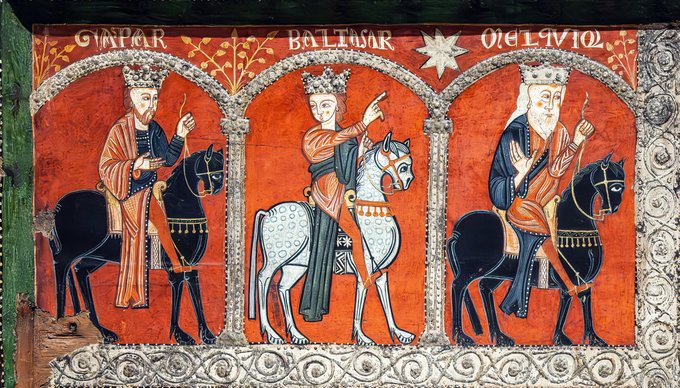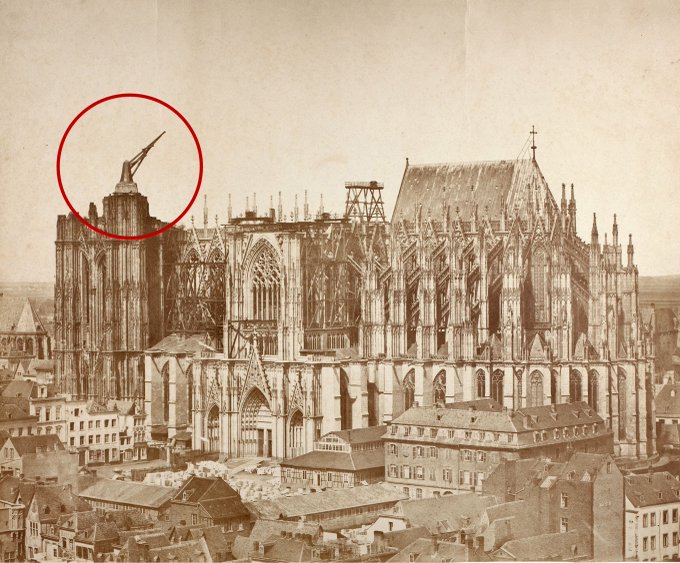Student Village Academy › Forums › HISTORY › General History › On this day in 1880, the Cologne Cathedral was finally completed—a staggering 632 years after construction first began.
Tagged: 3 wise men, History
- This topic is empty.
-
AuthorPosts
-
-
August 17, 2024 at 3:43 PM #71472
 Shekinah BramaModerator
Shekinah BramaModeratorOn this day in 1880, the Cologne Cathedral was finally completed—a staggering 632 years after construction first began.
But have you ever wondered why such a monumental structure was built in the first place?
It wasn’t just for grandeur or to showcase the architectural prowess of the time. The real reason lies in a rather curious and significant treasure that has been kept within its walls.
The idea that a medieval society would embark on such a colossal project—using only basic hand tools, fully aware they wouldn’t live to see its completion—is nothing short of incredible. What could possibly inspire such dedication and perseverance?
The answer lies in a relic of potentially immense importance: the remains of the Three Wise Men.
Yes, the very same Wise Men from the East who, according to the Bible, journeyed to Bethlehem to pay homage to the newborn Jesus.
Although not much is known about these figures, later writings suggest that after their visit to Bethlehem, they returned to their homelands in India and Persia. The legends surrounding their journey and their remains have captivated the imaginations of believers and scholars alike for centuries.
Now, let’s take a closer look at the golden reliquary that houses these remains (and I’ll show you what’s inside in just a moment). But first—could these relics be authentic? And how did they end up in Germany?
The story begins in the 4th century, with Helena, the mother of Emperor Constantine. Driven by a deep devotion to her faith, Helena embarked on a quest to locate relics associated with Christ. According to legend, she discovered Christ’s tomb in Jerusalem and continued her journey eastward in search of the remains of the Wise Men.
She eventually found them and brought the relics back to Constantinople.
But the story doesn’t end there. The relics were later moved to a church in Milan, only to be stolen by the Holy Roman Empire in 1162.
The bones were transported to Cologne, and it was decreed that the world’s largest cathedral must be built to house them.
The golden shrine created for the relics is nothing short of magnificent, adorned with intricate Bible stories and depictions of the Three Kings.
For centuries, the shrine remained sealed—until 1864, when it was finally opened.
What was found inside? Human remains, along with three crowned skulls.
Naturally, many are skeptical of such relics. The Middle Ages were rife with fabricated relics and dubious claims. Yet, there are intriguing details worth considering…
The bones appear to belong to three individuals: one young, one middle-aged, and one elderly. This corresponds with the earliest known depiction of the Three Kings, seen in a 6th-century mosaic in Ravenna.
A legend also suggests that the Wise Men were martyred as Christians, all at the same time—a claim that aligns with the evidence found in the bones.
Of course, it’s still possible this is nothing more than a medieval hoax. But is there anything that might connect these remains to a more ancient time?
Interestingly, in 1980, the silk that the bones were wrapped in was dated to modern-day Syria, roughly 2,000 years ago…
While this doesn’t prove anything conclusively, it adds a layer of mystery and intrigue to the story. Regardless of the relics’ authenticity, they have elevated Cologne to one of Europe’s most significant religious sites and sparked one of humanity’s greatest architectural endeavors.
Construction on the cathedral began in 1248 but was halted in the 16th century due to war, financial difficulties, and the Reformation.
For centuries, an unfinished medieval crane stood over Cologne’s skyline as a reminder of the project’s stalled progress.
However, in the 19th century, a resurgence of faith and romanticism inspired the completion of the cathedral, which became a symbol of the soon-to-be-unified Germany—a Gothic masterpiece rivaling anything in neighboring France.
Today, Cologne Cathedral stands as the most visited building in Germany, a towering testament to human perseverance.
Remarkably, despite Cologne being heavily bombed during World War II, the cathedral survived, even after taking 14 direct hits from aerial bombs.
German poet Heinrich Heine once pondered why modern society no longer builds great cathedrals. His response was telling: “People in those old times had convictions; we moderns only have opinions. And it needs more than a mere opinion to erect a Gothic cathedral.”
-
-
AuthorPosts
- You must be logged in to reply to this topic.












